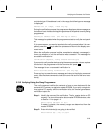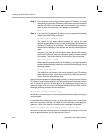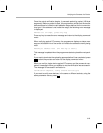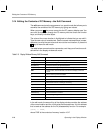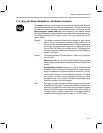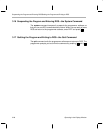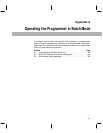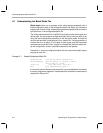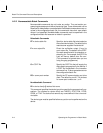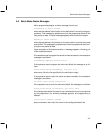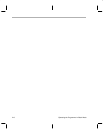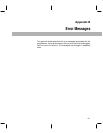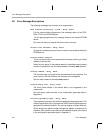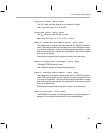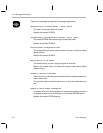
Batch File Command Rules and Descriptions
A-3
A.2 Batch File Command Rules and Descriptions
The batch commands can be classified as
executable
or
nonexecutable
. The
executable commands invoke operations, whereas the nonexecutable com-
mands define programming parameters and the device type.
The batch commands must conform to the following basic syntax rules:
1) Lower case and upper case characters are not distinguished.
2) Only one command is allowed on each line.
3) An = is required between a command and its operand if the command
has an operand.
4) No spaces are allowed between a command and its operand.
5) No leading spaces are allowed on a command line.
6) Comments are indicated by a ; in front of the comment text.
If any of the above rules are violated, or if a nonexistent command or file is spe-
cified in a configuration/batch file, an error message is displayed after the file
has been invoked.
A.2.1 Executable Batch Commands
There are three executable commands:
PR Program and verify device(s).
VE Verify device(s).
R Do device check on all device (gang programmer only).
Use only one of the commands, PR or VE, in a batch file. If both are specified,
only the PR command is executed.
Make sure that the data ranges in the COFF file are a subset of the ranges in
the device selected. The programmer attempts to program all the data ranges
of the specified COFF file, regardless of the device ranges defined in the de-
vice table. To eliminate extra data ranges (ranges that would be later pro-
grammed in an external EPROM, for example) from the COFF output file, mark
them as NOLOAD in the link command file. Refer to the
TMS370 Assembly
Language Tools User’s Guide
for more information on the linker and the
NOLOAD section type.
In the normal mode, the entire data range defined for the selected device is
usually programmed, and in the batch mode only the data range defined in the
output file is programmed. Therefore, it is possible that a device programmed
in batch mode will not verify correctly in the normal mode; the bytes failing veri-
fication are unused memory. To avoid this problem, always start with erased
devices, and always fill memory with FFh before loading a file in normal mode.
No error file is created when you program or verify in batch mode with the gang
programmer. Errors are indicated by the red LED below the failed device.



